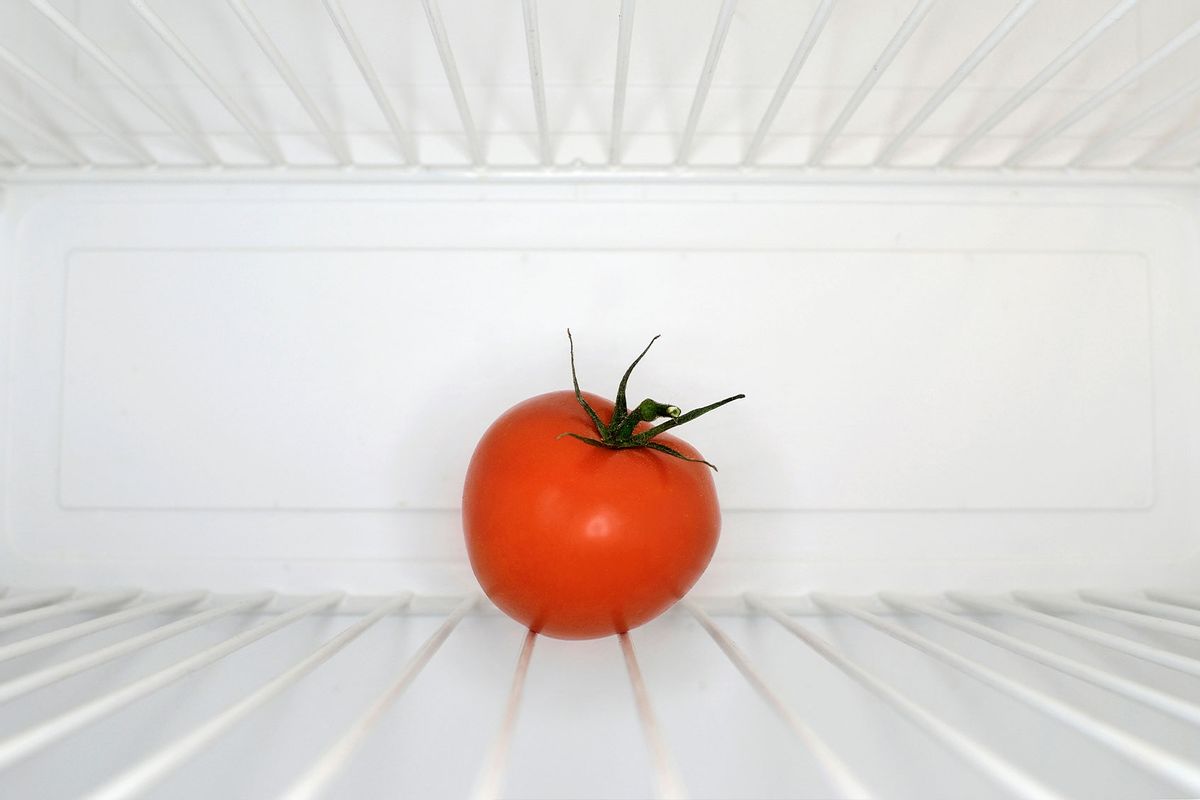Last week, I received no fewer than two dozen emails asking how I store tomatoes in my kitchen. They popped up in my inbox, one by one, after I published an essay about how quickly using up beautiful end-of-summer tomatoes taught me to infuse special ingredients into everyday cooking instead of waiting for some mythical "special occasion."
As I wrote: "Since I was on a clock to eat these perfect tomatoes — a tomato's shelf life is about a week on the counter and two weeks in the fridge — I didn't have the luxury of waiting for the perfect moment to use them."
If you've been in the business of food for long enough, you know that certain phrases, such as "jarred garlic" and "pineapple pizza," tend to ignite at least a spark of controversy when uttered. The allusion to keeping tomatoes in the refrigerator has a similar effect. As one reader (who gave me permission to share this) wrote to me, "I feel quite strongly about this. Sure, their 'shelf life' may be longer in the refrigerator, but what kind of life is that?"
Now, a confession from my kitchen: While I do tend to keep tomatoes on my countertops, I'm not particularly militant about it.
One of my most vivid childhood memories is of the small garden in the Chicago suburbs where my dad grew (as he put it) "salsa ingredients" — jalapeños, onions and tomatoes. Looking back, it strikes me as funny that he wasn't particularly precious about the produce he grew. (I, meanwhile, romanticized the heck out of the herbs I grew in my pandemic windowsill garden.) He'd pick them and carry them inside using a stray Jewel-Osco bag, before transferring them to a bowl or basket that moved back and forth between the counter and refrigerator shelf.
He liked them at room-temperature when making things like Sunday pasta sauce and (of course) salsa, but cool tomato slices ruled supreme when it came to making BLTs. Now, is this the "right" way to store tomatoes? Honestly, probably not.
At some point, after I'd left home, I read (and observed in my own cooking) that leaving tomatoes in the refrigerator can make them a little pulpy and less acidic. Alton Brown — whose show "Good Eats" served as my first form of culinary education beyond watching my mom cook — has written about this several times, including in a pretty concise 2014 Facebook post.
"Do me a favor: Never put tomatoes in the refrigerator," he wrote. "If they drop below 50 degrees F, a flavor compound called (Z)-3-hexenal is just going to flip itself off like a chemical switch ... permanently."
Ann Ziata, a chef at the Institute of Culinary Education, broke down this change for me via email.
"Chilled tomatoes will have an unpleasantly mealy texture and a muted flavor," Ziata wrote. "Room temperature is the ideal environment for serving tomatoes. Refrigeration can also prevent under-ripe tomatoes from fully ripening, so always hold under-ripe tomatoes at room temperature."
Want more great food writing and recipes? Subscribe to Salon Food's newsletter, The Bite.
There are a few benefits to temporarily placing tomatoes in the refrigerator.
"If your kitchen is very warm and humid, storing tomatoes in the fridge will prevent them from spoiling too quickly," she said. "Also, if you have very ripe tomatoes that you won't be immediately using, keep those in the fridge, too."
However, for many home cooks, the cons probably outweigh those benefits. As such, Ziata provided this advice: "Always make sure to bring refrigerated tomatoes back to room temperature before serving for best flavor. Let them sit on your counter until they don't feel cold anymore."
The thing is, I could tell my Dad all this and he would dutifully listen, but that's not going to change the fact that the man likes a refrigerator-chilled slice of tomato on his BLT — and I think that attitude is something more of us could embrace in the kitchen (I know I could).
I'm a big proponent of doing better once you know better. For example, once I learned about blooming spices in oil or this hack for making mess-free bacon, there was no going back. But there are times where, in our own kitchens, it's fine to be a little more laissez-faire. Sometimes it's OK to view a recipe as a template and certain techniques as best practices, as opposed to infallible rules.
I guess this is a long way of saying, don't worry if you, too, occasionally like a cool (if slightly mealy) slice of tomato from the fridge. I won't kick you out of my kitchen.
Read more
about cooking with tomatoes
Salon Food writes about stuff we think you'll like. While our editorial team independently selected these products, Salon has affiliate partnerships, so making a purchase through our links may earn us a commission.



Shares